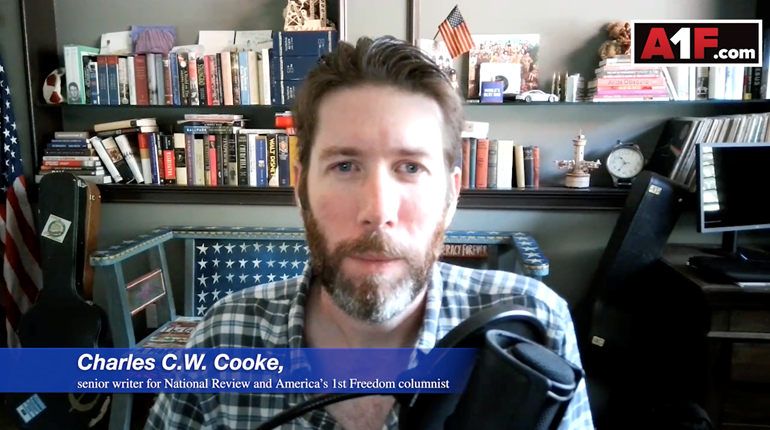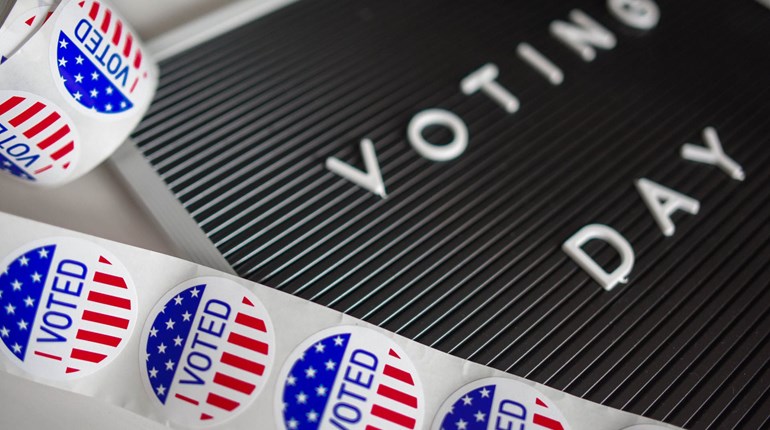
There are few ideas in American life more naive and irrational than that of the “gun-free zone.” As ever, it is imperative to move past the euphemisms and the rhetoric that pervade the debate, and to ask the material question: “For whom?” More specifically, it is imperative to ask: “Of whose guns are we to be free?” As we have learned time and time again, the unhappy answer to this crucial question is: “The people whom we want to have the guns when something goes seriously wrong.”
There are only limited circumstances in which it may make sense to limit the places that legal carriers can exercise their rights. That is, when the “zone” in question is small in size, sensitive in nature, entirely contained within an established perimeter and already being protected by men bearing arms. A good example of such an area would be the White House and similar government buildings.
These exceptions, however, must remain just that—exceptions. And outside of their narrow boundaries, the argument must fall and fall hard.
The fatal flaw beneath the idea of the “gun-free zone” is that the crimes it is intended to prevent are far more serious in nature than the crime that it seeks to create. Or, put another way, the core problem with the “gun-free zone” is that if a person is intent upon murder, rape, assault, robbery or terrorism, he will have no qualms whatsoever about violating the laws relating to the gun he uses in order to carry out those actions.
It would be self-evidently absurd to expect that a prohibition on using multiple parking spaces would deter a truck bomber, or that a man determined to deafen the occupants of a train would be put off by the realization that he was in the “quiet car.” So it should be here. Never in the history of the United States has a criminal’s willingness to commit a crime been contingent upon the laws that govern the lead-up to that crime. Criminals do not care what the firearm-acquisition rules happen to be; they do not care what the concealed-carry rules happen to be; and, as decades of experience have taught us, they do not care whether their target is in a “gun-free zone.”
Or at least, they don’t care insofar as those rules apply to themselves. By contrast, they often care a great deal about the rules, per se. Why? Well, because they know that the people who do care about the rules—that is, the good people who try to follow the law, and who do not want to be convicted of a crime—are made into easier targets by their compliance.
It is often suggested sarcastically that the advocates of “gun-free zones” believe that “signs can stop bullets.” As a criticism of those signs’ inability to prevent criminal activity, this is a solid barb. But, in fact, those signs do stop bullets: It’s just that the bullets they stop flying are the ones that, absent the gun-free zone, would be fired back at those intent on doing us harm. Were the idea of the “gun-free zone” to be rendered as a military strategy, it would look like this: “First, disarm. Next ... there is no next.”
The “gun-free zone” is little more than an exercise in wishful thinking. “I don’t think schools should be places for firearms,” you will hear. People also say, “I would prefer to live in a country where people did not take guns to Walmart.” As a prayer or idle aspiration, this is an appropriate sentiment. Is there anyone among us who does not regret the necessity of defending ourselves from evil? But as policy, it is suicidal. One might as well declare that beautiful beaches are no place for devastating hurricanes.
One does not need to be a champion of America’s Second Amendment to grasp why the colonists and their heirs were so keen to remain armed. To fly or to drive across the United States is to be astonished by its size and variation, and to boggle at how many people live in places that they—and they alone—must be responsible. In turn, it is to understand why America’s police forces are, both culturally and legally, considered to be an auxiliary service that sits atop, rather than replaces, the citizenry’s duty to defend itself. We have great debates in America about the size and scale of government, and about the right balance between state superintendence and volunteered cooperation. But, as a purely practical matter, most Americans are obliged to look out for themselves and for each other as a matter of daily routine. Even if we wished to, we are never going to reach a point at which there is a police officer on every street corner, in every supermarket or in every school. That is now, and forever will be, strictly up to us.
As a rule, Americans do not bear this burden with a frown. On the contrary, most of us are never happier than when collaborating by choice. But we might ask, nevertheless, that our efforts not be hampered by magical thinking. There is only one thing worse than to tell a man that he may not help himself, and that is to tell him that he may not help himself and that nobody else may help him either. That is precisely what “gun-free zones” do. In the vast majority of circumstances, the practice must be brought to an end.
The murderer in Aurora, Colo., as many other cowardly killers have done, selected a target with a posted “no-guns” notice. American moviegoers would be well-advised to take precisely the opposite course.
The good news is that, at some level, we already understand this. Suzanna Hupp, whose parents were killed in the 1991 Luby’s massacre in Killeen, Texas, famously testified in favor of concealed-carry laws by arguing that she had wanted to keep her gun in her purse on the morning of the shooting, but had left it “one hundred feet away in [her]car” for fear of losing her chiropractor’s license if caught carrying. Hupp’s argument was sufficiently persuasive to convince Texas to pass a shall-issue concealed-carry law, and for much of the rest of the country to follow suit.
The bad news is that, in much of the country, Hupp’s logic has not been equally applied to “gun-free zones.” What, one might ask, is the point in protecting the right of figures such as Hupp to carry their firearms with them when they leave their homes and their cars if they can’t actually take them anywhere in practice? If Americans end up with robust concealed-carry rights but a sprawling network of “gun-free zones,” they will have replaced one irrational restriction for another.
How Do We Change These Laws?
Improving the status quo will involve convincing both governments and private entities to lift the restrictions that are currently in place. The first part of that process—convincing government—is more straightforward: Americans merely need to convince their lawmakers to stop taking away their right to self-defense.
The second part—convincing private entities such as businesses and churches—is more complex. Irrespective of how poor their decisions may be, we should not push the government to tell churches, restaurants and department stores what policies they must set regarding firearms.
As private citizens, customers are absolutely entitled to make it clear that they will not patronize private institutions that leave them unable to defend themselves and that decline to provide their own security.
The murderer in Aurora, Colo., as many other cowardly killers have done, selected a target with a posted “no-guns” notice. American moviegoers would be well-advised to take precisely the opposite course. It is poor customer service to leave your patrons at the mercy of those who would do evil. Poor customer service should never be rewarded.
Where regulations continue to exist—and in some gray areas they will—Americans should demand that they be attached to individuals rather than to whole areas (or “zones”). Some states and companies have already taken this approach; for example, rather than barring firearms from a restaurant or bar, some states and businesses provide that the right to carry will be respected provided that customers do not consume alcohol.
A similar policy could apply to schools; for example, instead of rendering it illegal to bring a firearm onto school property, a better rule might be that concealed carriers are limited to those who have a reason to be on the school campus.In the marginal cases, the details will naturally vary, but in all instances, the aim should be the same: To avoid putting a sign up outside of a facility that reads, in effect, “Nobody here will fight back.”
We Need to Live in Reality
The U.S. Constitution is exceptional because it is built atop a cold recognition of how human nature actually works, rather than atop a fuzzy theory as to how it should work. The Founding Fathers grasped that human beings are ambitious, and always will be; that evil walks among us, and always will; and that “parchment barriers,” while important, are insufficient to fix all the ills that plague us.
This led them to institute a political and cultural order in which ambition is expected to counteract ambition; in which the good are expected to contend with the evil; and in which the weak must be permitted to enjoy more than just theoretical safeguards against the strong. The majority of the people who propose “gun-free zones” as a solution to our problems are well-intentioned and believe that they are helping, not hindering, the fight against violence. But they lack the willingness or the ability to examine this question in the serious, hard-nosed manner in which it must ultimately be examined.
Unilateral disarmament has never worked out—for nations or for individuals—and it does not work out here either. There is no such thing as a “gun-free zone.” There are zones in which people are permitted to defend themselves, and zones in which they are not. Picking which is preferable is a no-brainer.


































